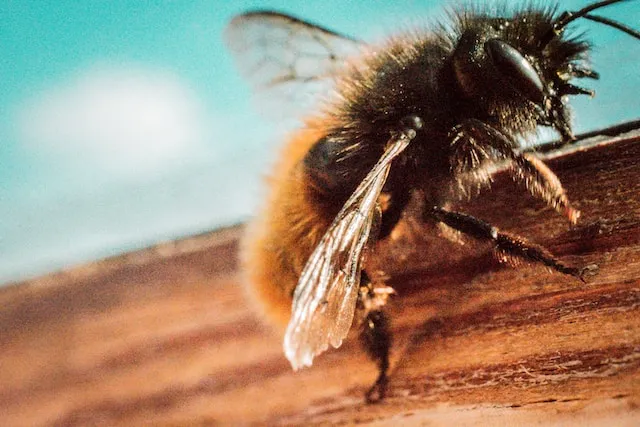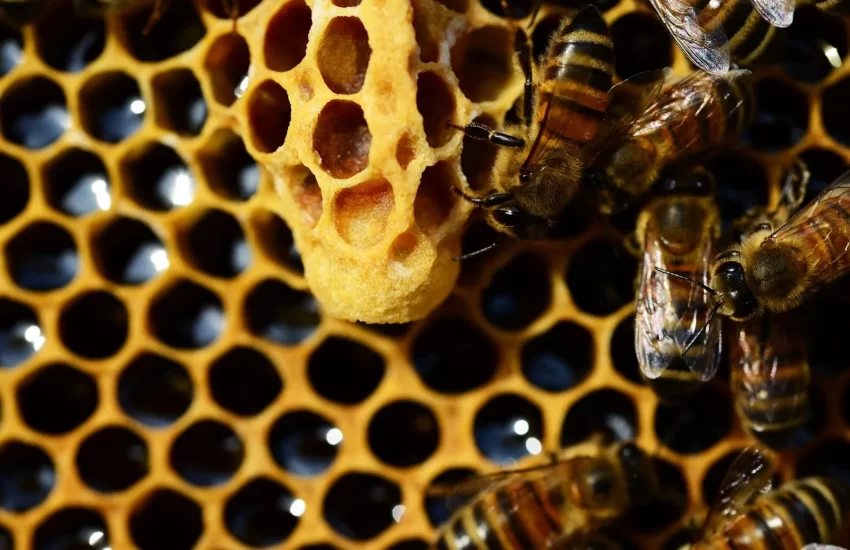30 Best Flowers That Attract Bees, Butterflies, and Pollinators to Garden
The sight of blooming flowers is a pleasant sight to us and attracts masses of pollinators, including bees. The flowers create the happiest moments of their lives. You will see them gracefully flying and dancing over the flowers as they collect different nectar tastes.
The bloom season ensures that their colonies have abundant nectar and pollen resources. Again, when we see them on flowers, we know that our plants and fruits will be productive too, as they help to pollinate them.
Surprisingly, not all flowers are appealing to the bees. They can surpass flowers from particular plants and storm others with zeal. Their exceptional vision enhances them to see most colors.
Role of Pollinators
Pollinators are a keystone species group in that they have a significant and unique role in ecosystem functioning by pollinating our crops. There are many known pollinators, such as birds, bees, wasps, butterflies, bats, beetles, and moths.
Bees and butterflies are more effective in pollination work. Since it is a two-way relationship, the flowers have a unique way of capturing their attention which we cannot see as human beings. Pollinators contribute directly to a third of the food that we consume.
Similar Articles you may like to read –
Approximately how many flowers must bees visit to produce one pound of honey?
What colors should you avoid around bees?
What Color Bees Cannot Recognize?
Are bees active at night?
What Do Bees Eat? Do bees eat Honey? Do queen Bees eat Honey?
Consideration When Choosing Flowers that Attract Pollinators
Native Plants
Plants native to your area will be a great success since they are well adapted to the soil and climatic conditions.
Avoid Pesticides
In eradicating pests in your garden, consider ways that will not harm the food you consume and the beneficial insects such as bees and butterflies.
Consider Diversity
Since bees and other pollinators will require food throughout the year and variation in diet, ensure the flowering period of the various plants spread through the year. When it is the time of pollination in your garden, they will not miss around.
Diversity and different flowering times provide a constant food supply all-round the year.
You may also like to read –
Interesting Facts About Honey Bees
How to Start Natural Beekeeping? Step By Step Guide
Bee Pollen Nutrition Facts
What does a bee sting look like in the skin? How to remove it?
Best Flowers for Pollinators
Want to make your garden a haven of pollinators? Then considers these best flowers.
1. Bee Balm
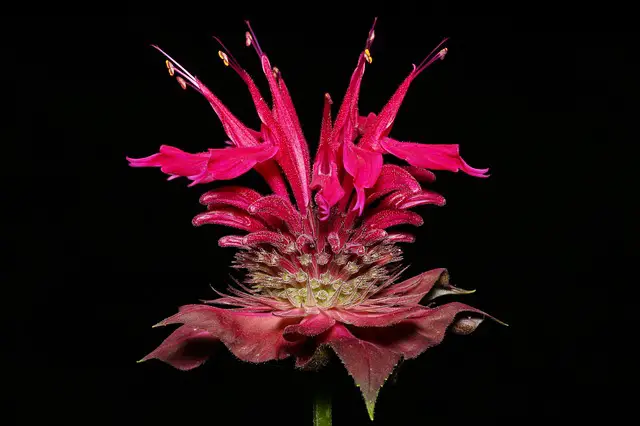
Bee balm flower is a beautiful flower for pollinators. The flowers can either be red, pink, or white colors and bloom in summer. The plant is herbaceous( non-woody stem) and perennial, meaning it endures the winter.
Its strong fragrance and nectar draw the bees and butterflies to it. The plant grows and spreads fast; it needs some space to develop. Since it is a perennial plant, it will remain in your garden for a long time and provide nectar and pollen to the pollinators. As you plant, consider a sunny spot in your garden.
2. Butterfly Bush
Pollinators are usually attracted to butterfly bush flowers due to their sweet scent and radiant colors. It is ideal for many gardeners since it is uncomplicated to grow and can do exceptionally well in wet and intensely dry areas.
The plant also has an extended flowering season: from spring to autumn. The long-blooming seasons give the pollinators ample nectar, especially bees. No maintenance is required for the plant apart from the annual pruning.
3. Cornflower
Cornflowers bloom in white, yellow, pink, and blue colors. The plant has a long flowering season, giving pollinators dependable nectar sources. They are popular in wildflower gardens since they are easy to bloom, thrive in varied soil conditions, and are drought-resistant.
4. Lavender

Lavender is a common herb in gardens due to its charming purple flowers and scented leaves rich in nectar and pollen. Its purple flowers are organized in spikes at the tips of the plant. Its sweet aroma that originates from the plant hairs makes it a dearie to pollinators. The fragrant flowers also are dried and used in aromatic sachets. Lavender flowers continuously bloom from mid-summer. It can thrive in poor soils and sunny environments.
5. Sunflowers
The sunflower plant possesses bright and huge flowers that attract bees and butterflies from afar. The annual and tall plant provides abundant nectar to the pollinators. It is good to consider pollen-bearing varieties for your bees if you are a beekeeper. Most varieties are drought resistant. This heliotropic plant blooms from summer to fall.
6. Sweet Alyssum
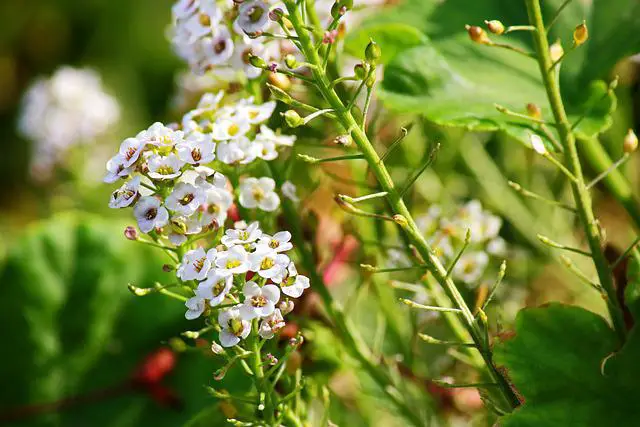
Sweet alyssum is one of the bee magnets that beckons pollinators from afar. Bees and butterflies are appealed by the honey-scented flowers of the sweet alyssum. It does well in partial sun and can bloom all year long.
7. Salvia
There are annual and perennial varieties of salvia, and their colors range from blue-purple to bright-red. The plants grow exceptionally well in a wide range of soils. Salvia flowers attract butterflies, bees, and many other pollinators. There are most prolific in spring to fall, although they can thrive all year round in mild climates.
8. Cat Mint
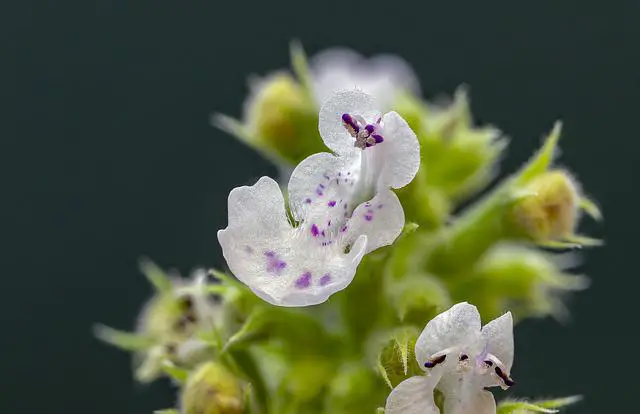
Catmint is attractive to pollinators with its vast blooms of purple flowers. The plant is perennial. During the winter season, it dies out to ground level but sprouts and blooms again in mid-summer. There are various catmint varieties, but the “Walkers Low” is more popular. It is also a beautiful garden plant.
9. Sedum
Sedum blooms in late summers attract numerous pollinators to its nectar-rich flowers. The flowers pop from a broad flat flower head giving insects and other pollinators a landing area. There are several varieties of sedum, including John Creech and Album Superbum.
10. Rosemary
Rosemary is a drought-resistant herb with needle-like leaves that adds flavor to our roasts and other foods. Pollinators also enjoy nectar from its blue flowers. It can begin to flower in spring to winter, even when other plants are dormant.
11. Milk Weed
On top of being the only host for the Monarch butterflies, it is also a credible source of nectar for other pollinators such as bees, beetles, flower flies, and moths. There are various varieties of milk week, including tropical, swamp, butterfly, and common milkweed. The various varieties bloom at different times. They spread rapidly and required ample room.
12. Blue Tansy
Blue tansy is an annual plant that draws all sorts of pollinators to its flowers. They take about eight weeks to flower after sowing the seeds. The clusters of purple flowers provide abundant nectar and pollen. You can sow seeds in late fall to provide an early bloom to the pollinators in spring.
13. Thyme
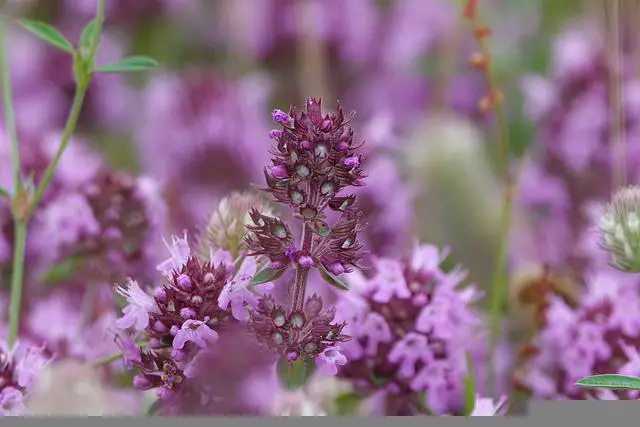
Thyme is a perennial plant tolerant to drought that attracts honeybees, bumblebees, leafcutter bees, and hoverflies through its clusters of purple flowers. You can also plant this fantastic plant on your paving cracks to enjoy the aroma as you walk around. It can also treat fungal and bacterial infections.
14. Cosmos
Cosmos is an easy-to-grow plant that blossoms in summer. The pollinators enjoy the large daisy-like flowers, which are rich in nectar. Its open flowers provide easy access to pollinators as they collect nectar. Their colors range from maroon, white, red to pink.
15. Heliotrope
The heliotrope plant produces fragrant vanilla-scented flowers that are either blue, purple, lavender, or white. They bloom from summer through to fall. Some people claim they smell like cherry pie. They grow well in well-drained soils.
16. Golden Rod
The goldenrod plant blooms from late summer through to fall. The golden yellow blooms attract bees and butterflies as well as other pollinators. The plant spreads aggressively and hence needs room for growth. They can do well in poor soil if well-drained. Once it establishes, it requires little care and water.
17. Allium
Allium plant is native to Asia, although cultivated in numerous countries as a flowering garden plant. They come in different varieties and have a powdery aroma that captivates pollinators. They spread swiftly in the garden and require ample space.
18. Button Bush
Buttonbush flowers blossoms in white or pale pink colors. Bees and butterflies enjoy visiting these attractive flowers on their foraging trips for their abundant supply of pollen and nectar. Honey bees that visit the plant carry its rich scent usually smelled in the apiary at night.
19. Clove Pink
Clove pink is an ideal plant for gardens with minimal areas they seek to fill. The plant possesses alluring scented flowers that pollinators love.
20. Day Lily
The daylily is one of the best blooming perennial plants with big and colorful flowers. They are insect and pest-resistant and grow in nearly all soil classes. Its flowering time begins in midsummer to early fall. They spread rapidly, are long-lived, and allure all sorts of pollinators.
21. Floss Flower
Floss flower is an annual plant that is native to Mexico. Its fascinating blue flowers blossom in late spring through summer to autumn. They provide excellent nectar sources to pollinators before the freezing season of winter.
22. Lychnis
Lychnis is also referred to as “ Rose Champion.” It adds sparkling color to your flower garden with its pink and white colors. It thrives well in full sun. Where there is a shade, they give fewer flowers. It attracts bees, butterflies, and bees with its pollen-rich flowers.
23. False Indigo
The dazzling blue flowers of False Indigo give a fantastic look to your garden. This plant from the pea family is rarely disturbed by diseases or pests. They are suitable for pollinators like butterflies and bumblebees because they can grasp and open their pea-like flowers and reach the nectar. The flowers bloom for six weeks in early spring and summer.
24. Aromatic Aster
Aromatic Aster is a perennial plant with star-shaped flower heads. It is easy to grow, and the flowers turn reddish-purple as they develop. They bring an attractive color to your garden in late summer and autumn when the other blooms may be fading. They provide a valuable late autumn pollen source for bees entering the cold winter season.
25. Tick Seed
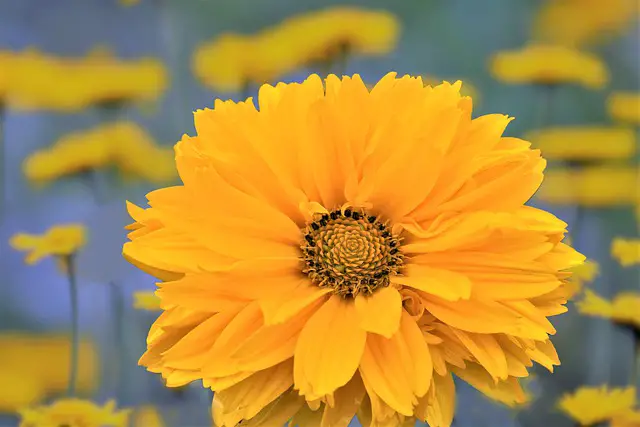
Tick seeds have long-blooming flowers that bloom from early summer to fall. It is a dearie to the butterflies who love the nectar from its flowers. The plant does well in various soils and can be annual or perennial. Come in a variety of heights.
26. Sweet Rocket
The sweet rocket has a sweet fragrance that attracts many pollinators to its white or purple flowers. Depending on the location, it blooms from April to July. The flowers form in loose clusters.
27. Zinnia
Zinnia acts as a magnet to many pollinators with its flowers in diverse colors. Their large poofy flowers stand out in the garden. Zinnias are easy to grow, mature rapidly, and keep blooming for many months. They do well in full sun but can tolerate a little shade.
28. Pincushion
Pincushion flowers are round and tufted and appear in white, pink, and blue colors. There are various plant varieties, and most of them are pretty short. They bloom from late spring to fall, depending on the variety. They do superbly in well-drained soils and prefer average water supply.
29. Helen’s Flower
Helen’s flower is beautiful and glamorous, named after a royal queen. It blooms in late summers to fall, attracting pollinators seeking to fill their winter food reserves like honey bees. The flowers in colors of orange, yellow, bronze, russet, and gold or blend all of them. It brings alluring beauty to your garden in the fall season.
30. Pansy
The pansy flowers release a delicate perfume-like scent which makes them adorable to bees and other pollinators. They radiate more early in the morning and at sundown. The flowers come in various colors, but blue and yellow flowers possess the most fabulous fragrance. The pansy plant is easy to grow. They love cool weather, so you can plant them in early spring and autumn. They can flower nearly all year round.
More articles you may like to read –
What kills honey bees?
What colors should you avoid around bees?
How far do honey bees travel from the hive?
Do Bees Feel Pain?
FAQs
How do bees pollinate flowers?
Bees pollinate flowers by helping them to transfer the male elements( pollen) of a flower to the female part (stigma) as they forage.
What can l plant in my garden to attract bees?
There are many plants you can plant in your garden to attract bees and other pollinators. Consider plants with yellow, blue, and purple flowers.
Do bees and butterflies love the same flowers?
Both insects love the sweet nectar. They also use nectar and pollen to feed their offspring.
What flowers do bees like most?
There are a variety of flowers that bees like including bee balm, purple cornflower, goldenrod, lavender, and many more. They also prefer flowers with places they can land on.
Do bees love Lavender?
Lavender is one of the best flowers that attract bees and is an excellent source of nectar and pollen.
How do l attract pollinators to my garden?
You attract pollinators to your garden by planting plants that produce nectar and pollen.
What part of a flower attracts bees and other pollinators?
The petals. These are colorful structures that attract pollinators and protect the reproductive parts of the flower.
Which are the best pollinators?
Bees are essential in pollination. They help to pollinate about 80% of the food we eat. A bee colony can help pollinate about 3 million flowers in a day.
You can learn more about the ” What Does a Bee Sting Look Like the Next Day? ” in our article.

